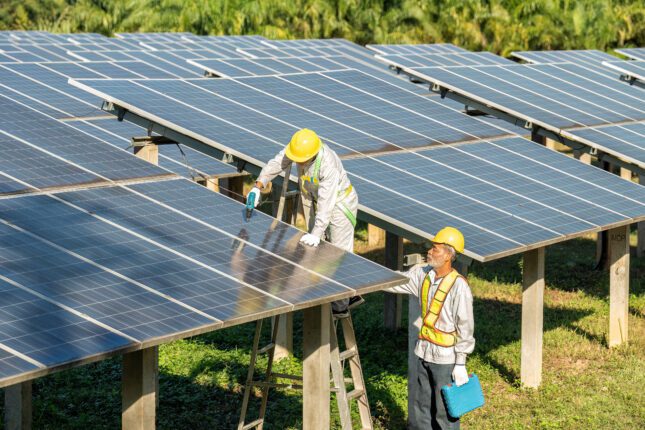-
Energy Security and Global Climate: How India Navigates Middle East Volatility
The recent conflict between Iran and Israel, as well as Iran’s threat to close the Strait of Hormuz, have done more than starkly expose the risks of geopolitical instability in the Gulf. It has also underscored the vulnerability of India’s energy security due to its heavy reliance on fossil fuel imports, and particularly crude oil transiting through the Strait of Hormuz.
The Strait of Hormuz is a key chokepoint because more than two-thirds of India’s oil imports and nearly 50% of its LNG imports pass through it. The perils associated with this dependence pose a threat not only to India’s energy security, but also to its long-term climate transition strategy. The impact on India’s development plans is clear, and it also forces the country to confront hard choices in balancing its immediate needs and its ambitious and transformative climate commitments.
Fossil Fuel Reliance and Hormuz Dependency
While the latest report from India’s Ministry of Statistics and Programme Implementation indicates that coal remains the backbone of India’s energy supply at 48% of the total national consumption, oil is the second largest source at a 28% share. The country’s dependence on oil imports is also significant, as 89% of India’s national requirements derive from imports.
These patterns of consumption and supply make disruptions in major supply routes like the Strait of Hormuz exceptionally damaging for India. Indeed, this channel represents a singular vulnerability: approximately 30% of all global oil crude shipments (including 50% of India’s total) use this passage. And any future blockade or conflict could provoke price volatility, supply shocks, and a scramble to secure alternative fuels.
This reliance is not merely technical matter for India and other nations. It is closely tied to historical policy choices, as well as the enduring role of oil and gas in global transportation, industry, and power generation. The fossil fuel sector also supports a large worldwide workforce, with about 48% of energy-related jobs depending on traditional energy. Without a comprehensive government plan to transition and re-train these workers, any movement toward renewables remains both a socioeconomic and a political challenge across the planet.
Geopolitical crises such as threats of closing the Strait of Hormuz create an international instability that also may compel nations (including India) to prioritize short-term economic stability over long-term climate goals. In the case of India, When faced with supply threats, India’s national policy preferences call for a default strategy to further diversify fossil fuel suppliers, rather than to accelerate a full transition toward renewables. This is due both to its heavy dependence on fossil fuels, as well as barriers to integrating renewable energy into existing power networks.
India is not unique in making this choice. Indeed, such a decision mirrors global patterns seen clearly during the aftermath of Russia’s invasion of Ukraine and in other Gulf crises, in which energy security needs superseded ambitious climate action at international fora like COP28. Persistent volatility in global oil prices, sanctions regimes, and threats to critical energy supply routes makes many countries hesitant to aggressively phase down fossil fuels or commit to stretching renewable targets. And because climate change priorities risk being sidelined amid cascading crises, a concerted diplomatic push is necessary to keep the energy transition central to geopolitical conversations.
Finding Opportunities Amidst Crises
These vulnerabilities may offer India opportunities to transform risk into resilience, however. The urgency of protecting its economy from oil price shocks justifies both further diversification of the energy mix and a rapid scaling of solar and wind projects. Investments in renewables will reduce India’s exposure to Middle East disruptions, but also offer a stage to secure diplomatic prestige as a leader of the Global South on climate change.
A pursuit of international partnerships and leveraging diplomatic platforms such as the recent COP30 meeting in Brazil are key avenues to develop green energy sources. Brazil’s role in the presidency of this meeting and the diplomatic prestige of this summit could enhance momentum for climate action, especially when both nations demonstrate the responsibilities of developed nations to finance a just energy transition. Combining diversification with global alliances will offer India the chance to advance its vision of Viksit Bhara—a developed India—while the nation addresses the dual imperatives of security and sustainability.
Yet India’s energy transition must push past commitments undertaken at COP30. Policy innovation, economic feasibility, and robust partnerships are essential. For instance, scaling solar and wind power has become increasingly viable, as evidenced by India’s record-setting 2023 solar installations and its continued support for state-led wind projects. Overcoming grid integration and land acquisition will pose continuing challenges, however. And the economic feasibility of progress depends upon sustained investment through targeted measures such as green bonds and risk guarantees.
The confluence of the Indian government’s “Panchamrit” commitments and national energy security priorities have driven a public appetite for renewable sources of energy. Coal and oil price shocks have only increased the demand for action. Partnerships such as the International Solar Alliance, Brazil-India biofuel cooperation, and EU green tech pacts present opportunities for trade and technology transfer that may offset infrastructure challenges and fill financing gaps.
Regulatory delays, grid bottlenecks, and local opposition continue to stall necessary projects. Reforms in land, grid, and finance policies, coupled with measures to incentivize private sector investment and public acceptance, must be implemented. If Brazil and India jointly advance financing arrangements and technological innovations at COP30, they can catalyze tangible progress toward a just transition and enhance resilience against global energy market volatility. Brazil’s achievements at COP30 could also increase its international prestige due to the unstable conjecture.
Conclusion
India’s response to Middle East volatility must extend beyond mere patches of supply gaps. Strategic diversification, accelerated renewable deployment, and targeted worker transition programs are essential to navigate the turbulent nexus of energy security and climate goals. Purposeful diplomacy and clear policy design can turn India’s vulnerability into a catalyst for leadership in utilizing global platforms to weather crises and advance toward a resilient, low-carbon future. Opportunities offered by COP30 and a broader convergence on the climate agenda could increase collaboration between leaders in the Global South (including India and Brazil)—and steer a course toward greater security and resilience for the global climate agenda.
Adhaviti Nitin Deshmukh holds a Master’s degree in International Studies from Symbiosis International University, India, with a focus on geopolitical risk analysis. She is pursuing a Master’s degree in International Development at George Washington University.
Matheus Petrelli is a researcher at Federal University of Rio de Janeiro’s Asian Studies Laboratory and its South American Political Observatory, where he is pursuing a Master’s degree in International Political Economy at the Federal University of Rio de Janeiro.
Marianna Albuquerque is a professor at the Institute of International Relations and Defense at the Federal University of Rio de Janeiro, where she took a Master’s degree and a PhD in Political Science. She undertook post-doctoral studies in Military Sciences at Brazil’s Army Command and General Staff College (ECEME).
Sources: Argus Media; E&E News; Economic Times; IEA; KPMG; London School of Economics; Ministry of Environment, Forest and Climate Change (India); Ministry of Statistics and Programme Implementation (India); Money Control; Science
Photo Credits: Licensed by Adobe Stock.
 A Publication of the Stimson Center.
A Publication of the Stimson Center.









